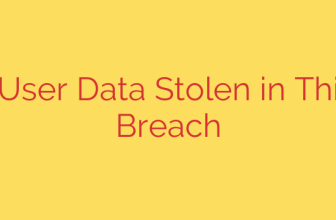
Red Hat Confirms Security Breach: Source Code Leaked from Internal GitLab Server
Red Hat, a leading provider of enterprise open-source solutions, has officially confirmed a security breach involving one of its internal development systems. The incident resulted in the unauthorized access and theft of source code from a GitLab server used by its Red Hat Enterprise Linux (RHEL) team.
While any breach is a serious matter, the company has clarified the scope of the incident, emphasizing that the impact on customers and core products is limited. Here’s a detailed breakdown of what happened and what it means for the wider tech community.
What Happened? The Details of the Breach
The security incident involved unauthorized access to an internal GitLab server, which is a platform commonly used for source code management and collaborative software development. According to statements, a threat actor successfully gained entry and exfiltrated source code related to internal projects.
The breach was brought to public attention after a threat actor, known for previous high-profile cyber incidents, posted samples of the allegedly stolen data on a hacking forum to substantiate their claims. Following this, Red Hat launched an immediate investigation and confirmed the intrusion.
Key points about the incident include:
- Targeted System: The breach was isolated to an internal, non-production GitLab server used for early-stage development.
- Stolen Data: The compromised data consists of source code for internal tools and projects.
- Containment: Red Hat has taken the affected system offline to prevent further access and is conducting a thorough forensic investigation.
Assessing the Impact: Was Sensitive Customer Data Exposed?
The primary concern in any corporate breach is the potential exposure of customer data or critical intellectual property. In this case, Red Hat has been clear about the nature of the compromised assets.
Most importantly, no customer data was compromised in this incident. The breach was confined to a development environment and did not affect production systems that host customer information or services.
Furthermore, the company has stated that the stolen code does not belong to its core, commercially available products like Red Hat Enterprise Linux. Instead, the data pertains to internal, potentially experimental projects. This distinction is crucial, as it means the integrity and security of its flagship software remain intact.
To be clear, the breach did not affect:
- Customer accounts or sensitive information.
- Production-level systems or services.
- The core source code of Red Hat Enterprise Linux or other major products.
While the leak of any proprietary code is a significant security event, the limited scope suggests that the direct risk to Red Hat customers is low.
Key Security Takeaways for Your Organization
This incident serves as a powerful reminder that all parts of a company’s digital infrastructure, including development and testing environments, are potential targets for threat actors. These non-production systems are often less fortified than their production counterparts, making them attractive entry points.
Here are actionable security tips every organization should consider:
Secure Your Development Environments: Treat your development, staging, and internal tool servers with the same security rigor as your production systems. This includes applying security patches promptly, enforcing strong access controls, and regular security audits.
Enforce Multi-Factor Authentication (MFA): One of the most effective defenses against unauthorized access is MFA. Ensure that MFA is enabled on all critical systems, especially on code repositories and administrative portals like GitLab, GitHub, or Bitbucket.
Implement the Principle of Least Privilege: Users and service accounts should only have access to the data and systems absolutely necessary for their roles. Limiting access rights can significantly reduce the potential damage if an account is compromised.
Monitor for Unusual Activity: Deploy and maintain robust logging and monitoring solutions. Actively look for signs of suspicious behavior, such as unusual login times, access from strange IP addresses, or large data downloads, to detect and respond to threats quickly.
While the Red Hat incident appears contained, it underscores the persistent and evolving nature of cybersecurity threats. By learning from these events and hardening all aspects of IT infrastructure, organizations can build a more resilient defense against attacks.
Source: https://go.theregister.com/feed/www.theregister.com/2025/10/03/red_hat_gitlab_breach/








